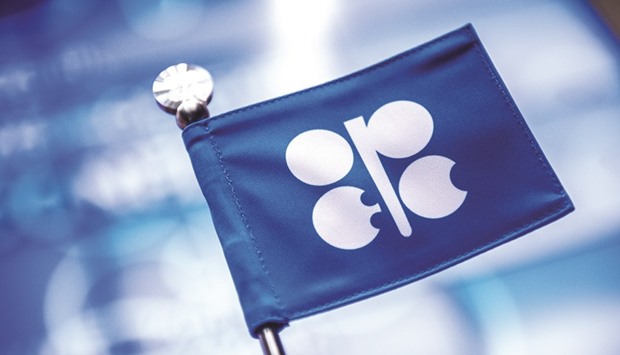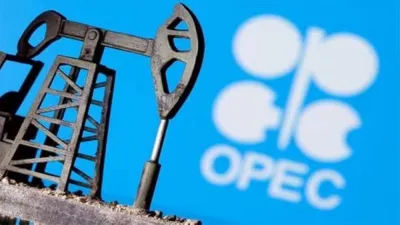Qatar’s oil output is slated to be lower by more than 11% year-on-year in 2017, in line with the decision of the Organisation of the Petroleum Exporting Countries (Opec) to cut production, according to an estimate of a leading economic think-tank in the Gulf Cooperation Council.
According to the Global’s calculation, Qatar’s oil production is estimated at 0.62mn barrels per day (mbpd) in 2017 against 0.7 mbpd in the previous year, implying a fall of 11.43%.
The lower production is in line with the decision of the Opec and non-Opec members to collectively reduce output by 1.8 mbpd, effective from January 1, 2017, in order to “rebalance” the over-supplied global market.
Qatar’s hydrocarbon bellwether has announced its production cut plan, in line with the Opec’s call. “We have started advising our customers of the expected reductions in oil deliveries to ensure the state’s compliance with Opec’s allocations,” Qatar Petroleum president and chief executive Saad Sherida al-Kaabi said recently.
On Qatar’s 2017 budget, Global said Qatar’s expected revenues may be “understated” as the current oil prices remain above $50 a barrel.
“Due to the conservative assumption that oil prices would remain around $45 per barrel, revenue expected in 2017 may be understated, on our estimates, as current oil prices stand well above $50 per barrel.” The budget oil price assumption was $48 for 2016, $65 (2013-15) and $55 (2012).
The country’s 2017 revenue is estimated to be QR170.1bn compared to QR156.0bn in the previous fiscal year, implying an increase of 9%. This is ascribed to a boost in non-oil revenue, Global said.
Expenditure is expected to amount to QR198.4bn vis-à-vis QR202.5bn in the previous fiscal year, easing slightly by 2%, it said, adding consequently, the budget deficit is forecast to be QR28.3bn in 2017.
The estimated deficit in the budget was due to a combination of a phase of high expenditure on development and low energy prices, Global said.
“The budget demonstrates the government’s commitment to complete all major sector projects on schedule,” it said, the key focus for the 2017 budget is to ensure major projects (including the ones associated with the 2022 World Cup) are executed as planned.
Allocations for major projects were QR93.2bn or 47% of the total expenditure. In 2017, the government is expected to sign contracts for new projects worth QR46.1bn, including infrastructure and transportation at QR25bn, projects linked to World Cup 2022 facilities totalling QR8.5bn, health and education QR5.8bn, and other sector projects valuing QR6.8bn.
Funds to the education sector remain at QR20.6bn, representing 10.4% of the expenditure. They are allotted to complete 28 schools and nurseries and construct 17 new schools and nurseries. Funds are also allocated for new projects in Qatar University, including laboratories for the Faculty of Sciences and the Faculties of Education, Pharmacology, and Law. The money is also kept aside to complete the projects in the Qatar Foundation for Education, Science and Community Development, including infrastructure and transportation, and research facilities in Education City.
In 2017, planned spending to the healthcare sector stands at QR24.5bn, representing 12.3% of the expenditure. Several projects, including the final phase of Sidra Medical and Research Center, would be financed during the year.
Allocations have also been made to increase facilities at Hamad General Hospital, and complete the Laborers’ Hospital in the Industrial Area, and expand Hamad General Hospital.
Oil in 2017 seen capped below $60 by strong dollar, US shale
Oil prices will gradually rise towards $60 per barrel by the end of 2017, a Reuters poll showed yesterday, with further upside capped by a strong dollar, a likely recovery in US oil output and possible non-compliance by Opec with agreed cuts.
Brent crude futures will average $56.90 a barrel in 2017, according to 29 analysts and economists polled by Reuters.
The current forecast is marginally lower than the $57.01 forecast in the previous survey.
However, average Brent prices are expected to improve with each subsequent quarter, starting with $53.67 in the first, to $56.51 in Q2, $58.69 in Q3 and $59.78 in the fourth quarter.
Brent has averaged about $45 per barrel so far this year.
The poll forecast US light crude will average $55.18 a barrel in 2017. WTI has averaged about $43.38 so far in 2016.
“Crude prices should trade most of the time above their 2016 average. A stronger upside potential should become evident especially in the second half when the market fundamentals will record a significant improvement (under the assumption of strong compliance to the Opec deal),” said Intesa SanPaolo analyst Daniela Corsini.

Qatar’s lower production estimates are in line with the decision of the Opec and non-Opec members to collectively reduce output by 1.8 mbpd



